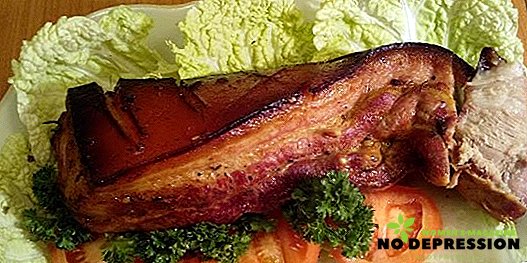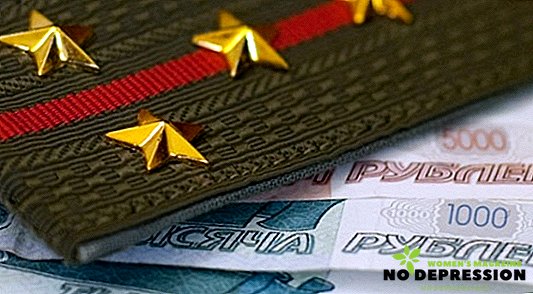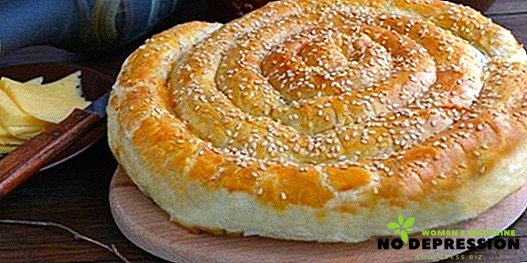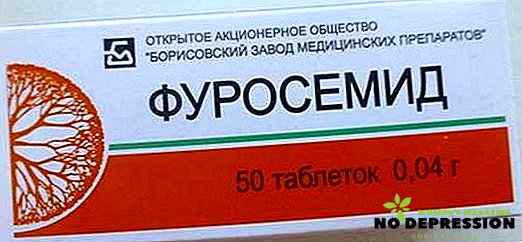Exposure to bronchial asthma is more typical for those who live in large cities, where the air contains a huge amount of dust, industrial emissions, and other harmful substances that have a negative impact on human health.

What is the disease?
In such conditions, the respiratory system is particularly affected, so bronchial asthma is a disease that leads among the most common. This is a chronic pathology in which, under the influence of a number of factors, an inflammatory process occurs, the airways constrict, resulting in patients having breathing problems, which are expressed in periodic attacks of breathlessness.
At the same time, the diseased bronchi produce an enormous amount of mucus, which prevents normal air circulation, which only aggravates the human condition. The main symptoms of asthma include:
- Agonizing cough, which tends to increase under the influence of provoking factors: cigarette smoke, cold air, strong physical exertion, and so on.
- Shortness of breath, which in severe form of the disease is characterized by the inability to exhale air from the lungs normally.
- Pathological wheezing and whistling in the bronchi.
There are many factors that provoke the development of this disease. The above mentioned bad ecological situation is only one of the main ones. The disease itself is inherently an allergic reaction of the body to an allergen caught in it.
Separately, cardiac asthma, which has similar symptoms, should be noted, but the causes of the onset are heart disease.
Basic prevention measures
Prevention is a set of medical measures that will help prevent illness.
This is a very broad concept, which is divided into 3 types:
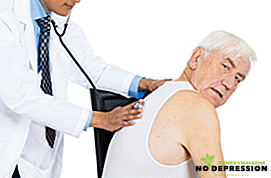 Primary prevention is the most effective measure aimed at eliminating the factors that lead to the disease. This, above all, a healthy lifestyle, physical education, proper and quality nutrition, the rejection of bad habits.
Primary prevention is the most effective measure aimed at eliminating the factors that lead to the disease. This, above all, a healthy lifestyle, physical education, proper and quality nutrition, the rejection of bad habits.- Secondary prevention contains a set of procedures and activities that will help identify the disease with its asymptomatic development. They are also necessary to prevent the development of existing symptoms.
- Tertiary prevention - measures that are used to relieve the complications and recurrences of an existing disease.
Primary preventive measures for children and adults
For kids
This disease often occurs in pediatric patients. First of all, this is due to the increased sensitivity of the unformed organism to adverse factors, the propensity to allergies. In the early stages of a baby's life, it is important to continue breastfeeding as long as possible. Mother's milk is the most suitable food for small children. It also serves as a source of important nutrients that form the child’s immunity, its resistance to all adverse environmental factors.
In older age, it is important to prevent the occurrence of allergic dermatitis in the child, excluding its contact with those substances that can provoke the disease. This includes many foods, especially strawberries, citrus fruits, chocolate, and so on. In addition, one of the causes of allergy - modern household chemicals. Therefore, it is important to provide the child with a comfortable living environment, excluding the presence of all kinds of irritants in the room.
In adults
 The methods of primary prevention should be resorted to by those who already have a history of problems that are associated with the respiratory system. In order to avoid the occurrence of attacks of bronchial asthma, it is necessary to monitor the favorable conditions of their stay.
The methods of primary prevention should be resorted to by those who already have a history of problems that are associated with the respiratory system. In order to avoid the occurrence of attacks of bronchial asthma, it is necessary to monitor the favorable conditions of their stay.
Limit contact with potential sources of allergy, refuse to work in hazardous working conditions, use hypoallergenic household chemicals and cosmetics in everyday life.
It is necessary to monitor the cleanliness of the living room, conducting regular wet cleaning, avoiding dry air. During the flowering of plants, try not to leave the house unnecessarily and do not leave the city. An important role in primary prevention has a rejection of such habits as smoking, because it is the direct cause of the appearance of bronchial asthma.
Secondary prophylaxis in children and adults
In children
This type of event is aimed at preventing the pronounced manifestation of symptoms. It is important to maintain the active lifestyle of the child and his adaptation in society.
Undoubtedly, observation by an allergist, pulmonologist, registration, following all the recommendations of a doctor plays an important role in this process. Parents need to pay heightened attention to health, strengthen the body's defenses, they need to eliminate the foci of infection in the airways in time, fighting sinusitis, bronchitis, pneumonia, as they can not only cause asthma, but also become chronic.
It is important to know the degree of sensitivity of the body to allergens, for which you need to pass special tests. If it is established that any factor is the cause of the allergic reaction in a child and can cause an attack, contact with him should be excluded by 100%.
To preventive measures that will help prevent the onset of symptoms, include respiratory gymnastics, massage, rest in sanatorium-resort institutions.
In adults
In many ways, the principles are similar to the measures that are offered in childhood. However, there are several important additions. The basis for the prevention of asthma attacks:
- Complete rejection of bad habits.
- If you have excess weight, you need to get rid of it, because with obesity all systems and organs always suffer, experiencing a tremendous load.
- It is important to observe the regime of work and rest, to avoid stressful situations, not to overstrain.

Many adults often ignore medical advice without exacerbation. Naturally, this can cause another attack. Therefore, it is important to comply with all the instructions of doctors and take prescribed medications.
Tertiary prevention
In the case of bronchial asthma, this type of prophylaxis will help improve the condition of the patient during the attacks, to prevent the development of complications.
Almost all activities at this stage are associated with the intake of medicines. They come in two groups:
- bronchodilators;
- hormonal medications for oral and inhalation.
General preventive measures
Adults and children need to lead an active lifestyle, move more often, eat right, strengthening the body's defenses. These simple principles of a healthy lifestyle are the basis for preventing not only asthma, but also a number of other diseases.
It often happens that an infectious agent leads to asthma, which is why it is so important to treat bronchitis, sinusitis in time. The exclusion of contacts with allergens is another important condition that will prevent the development of this pathology. An important point of prevention - the creation of comfortable conditions in the house. So, in the room where the patient lives, there should be as little as possible sources of dust, pieces of furniture, especially carpets, chairs, sofas upholstered in soft fabric. The presence of indoor plants is also unacceptable.

It is necessary to air regularly and carry out wet cleaning in the room, at least three times a week. Low humidity in the room will reduce the risk of asthma attacks, so it is recommended to purchase a humidifier. Also remember that when cleaning the room is not recommended to use household tools on a synthetic basis.
Some recommendations of doctors
The opinion of experts regarding the prevention of the development of this disease is reduced to the fact that preventive measures, maintaining a healthy lifestyle, avoiding contact with allergens, timely treatment of infections of the upper respiratory tract are most effective. They reduce the risk of this pathology.
However, many patients have a genetic predisposition to the disease, and in this case, primary prevention may not be as effective. To prevent attacks and monitor the state, doctors recommend other preventive measures other than those listed above.
So, to control the respiratory function, you must have a peak flow meter on hand. Thanks to him, you can understand how pronounced the changes occurring in the bronchi. It will also help to predict another attack. In addition, measurements carried out in the morning and in the evening and their results can be used by doctors to correct and prescribe additional treatment. It is also important for the patient to know the scheme of assistance in the event of an attack. Doctors strongly recommend teaching this to children.
First aid are as follows:
- Termination of contact with the allergen.
- Reception of bronchodilators which the doctor has to write out.
- Staying at rest for 30-60 minutes after taking the medication.
- It is important to remember that during an attack you can not panic, because it worsens the patient's condition.
If the drug was ineffective, do not call the ambulance brigade.
Bronchial asthma is a disease that greatly reduces the quality of life. Therefore, the primary prevention measures of this pathology should be respected by all who want to stay healthy for many years. Therefore, patients who suffer from this pathology should not despair, since the implementation of the recommendations of the doctor and compliance with measures to prevent attacks can cause persistent remission.


 Primary prevention is the most effective measure aimed at eliminating the factors that lead to the disease. This, above all, a healthy lifestyle, physical education, proper and quality nutrition, the rejection of bad habits.
Primary prevention is the most effective measure aimed at eliminating the factors that lead to the disease. This, above all, a healthy lifestyle, physical education, proper and quality nutrition, the rejection of bad habits.

